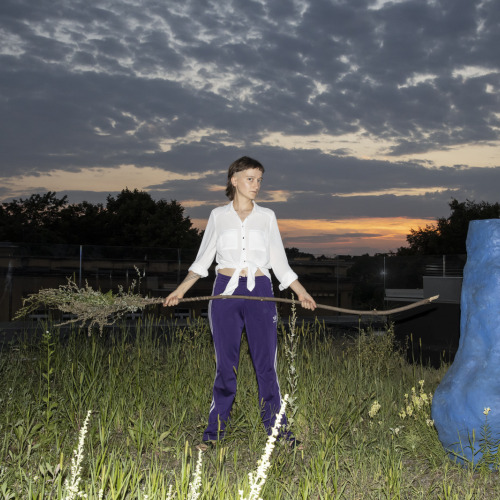
Resonating Memory Traces
PROGRAMME 5
pm to 7.30 pm – THEORY:
Seppo Gründler & Cordula Bösze
Lichtmusik / Seeing
Sound
A presentation of research into visual music
by Mary Ellen Bute
“I will try to establish a discussion of the life and work of
Mary Ellen Bute, who was a pioneer of research into the possibilities
concerning connections between light with music and vice versa. As a woman she
had to grab her chance of establishing a niche in a non mcp dominated field.”
(Seppo Gründler)
Elisabeth Schimana
A portrait of Rebekah
Wilson / Netochka Nezvanova
Camera: Reinhard Mayr
Rebekah
Wilson – also known as Netochka
Nezvanova – is a pure fiction, the pseudonym of an enigmatic
author whose name is the eponymous title character of an early unfinished novel by Fyodor Dostoevsky. In
actual fact Rebekah
Wilson is a New
Zealand woman, a trained composer. Subsequently Netochka Nezvanova went on to
become an iconic personality of early 21st century Internet
and software art; she also appeared at many festivals throughout the world –
though most definitely it wasn't the same person appearing each time! In 2002 Rebekah Wilson
re-emerged as a curator at STEIM in Amsterdam before returning to her home
country.
Martin Breindl
A portait
of Liesl Ujvary
Camera: Magdalena Vetter
Reading: Ann Cotton reads Translator 01 by Liesl Ujvary
Liesl Ujvary comes from that
generation for whom using computers is not a matter of course. Her approach is
probably best described by Martin Breindl in his piece Bewegung in
Möglichkeitsformen, über Liesl Ujvarys Musik (Movements in Probability Shapes – about Liesl Ujvary’s music):
“Ujvary can
perform these transformations because she exclusively works at the virtual
machine whose integral part she herself has become a cyborg. Her achievement as
a cyborg is that she understands and exploits the potentials of this
human-machine fusion from the inside out (this does not necessarily mean that
she has to fully understand the technology she uses, but rather that she is
able to enter the potential fields offered by this technology).”
PROGRAMME
10.30 pm to 12 pm – PERFORMANCES:
4:3
Composition and electronics: Elisabeth Schimana
Flute: Cordula Bösze
Terpsitone: Elena Golovasheva
4:3 is a resonating memory tracing the 1930s
experiments of Mary Ellen Bute in Lev Theremin’s New York studio which investigated the
concept and technical potentials of connecting light and sound and the possibilities
that one could be used to directly control and influence the other.
A History
of Mapmaking
or
Aerial Photography and 31 Variations on a
Cartographer’s Theme
Composed and performed by Rebekah
Wilson
Rebekah Wilson will utilise the amplified and manipulated sound of
a live cello, the sounds and gestures of which provide triggers for digital
audio events.
Ghostengine
Talking without Language
and Speaking without Words
Composed and performed by Liesl Ujvary and Ann Cotton
Two writers make an attempt to communicate without language. Liesl
Ujvary is already creating direct, poignant, and non-verbal compositions, which
sketch a panorama of the human condition. Both she and Ann Cotton remain in a
familiar domain, but tonight they shall be operating with new and different
tools...
The theremin functions as a kind of ‘speaking instrument’, an
attribute that all newcomers to it explore with great curiosity and
experimental verve. In addition, Liesl Ujvary and Ann Cotton shall use a
Kaosspad and a laptop to filter the theremin’s sounds in different ways.
IMA Salon
Chill Out
Turntable
improvisations by Ushi Reiter and
live visuals by Starsky
“Scratching records, placing the needle in the groove, scraps of sound
all conjoin into a dialogue with static soundwaves and space. The performance
starts with material that picks up from sound material of the 20th century
produced exclusively by women. In addition to searching through net archives
for this purpose, the work of contemporary sound producers will also play a key
role. Vinyl records will be produced especially for the performance.” (Ushi
Reiter)
“Live visual performances do not try to tell a story or create a linear
course of action. Instead, their content is associative and ambiguous, enabling
a sequence of images to be created. The logic of sequence is a result of the
image contents and their extensive meanings, as well as the different methods
of interconnecting images, and of linking images with music.” (Starsky)
Organisation: City of Women
In
collaboration with: IMA & LTNC-Lady Tigers Night Club, Austrija; Kiberpipa
With the support of: Österreichisches
Kulturforum Ljubljana; Bundeskanzleramt-Kunst; Niederösterreich kultur


